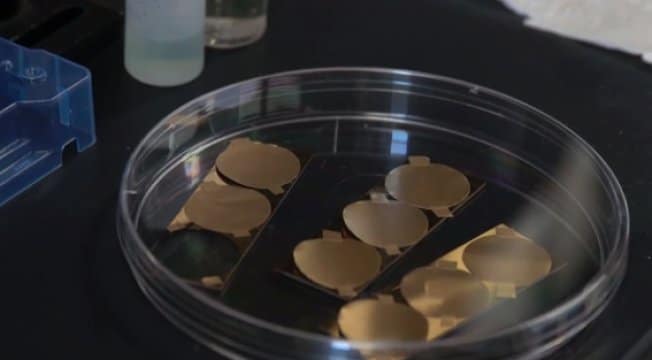Nanorobots were built by gold coating nanowires with hybrid platelets and red blood cell membranes which allows the nanorobots to perform tasks of two different cells at once: platelets bind pathogens; and red blood cells absorb and neutralize toxins produced by the bacteria. Nanorobots respond to ultrasound via their golden bodies, giving them the ability to swim around rapidly without the need for chemical fuel, the mobility helps nanorobots to efficiently mix with targets within the blood and speed up detoxification; protection from biofouling is also provided by the coating. When proteins collect onto foreign object’s surfaces and prevent them from operating normally the process is called biofouling.
Nanorobot hybrid coating was created by separating entire membrane from platelets and red blood cells, then applying high frequency sound waves to fuse membranes together. Membranes were taken from actual cells and contain all their original cell surface protein functions. Specific surface chemistry was used to coat the hybrid membranes produced onto gold nanowires to make the nanorobots. End result of the process are nanorobots that extremely tiny, 25 times smaller than the width of human hair, golden bodies traveling up to 35 micrometers per second in blood powered by ultrasound.
Testing showed these nanorobots to be effective. Nanorobots were used to treat blood samples contaminated with antibiotic resistant MRSA strain of Staphylococcus aureus and their toxins, within five minutes it was observed that these blood samples had three times less bacteria and toxins than untreated samples.
Researchers noted the work is still early on, and the goal is not for the nanorobots to be used specifically for treating MRSA infections only, rather more generally for detoxifying biological fluids. Development of the nanorobots using biodegradable materials instead of gold is also being developed. Future investigations will include testing in live animals.




